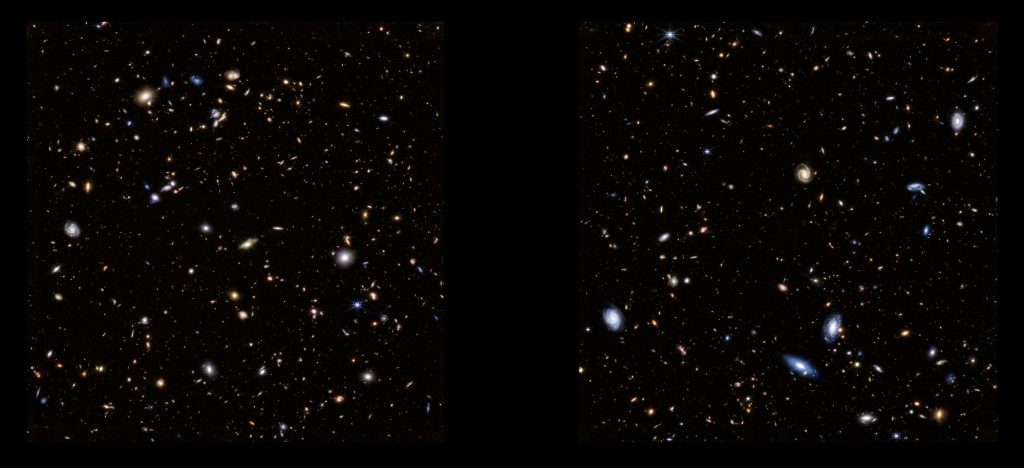Webb Shows Areas of New Star Formation and Galactic Evolution
Editor’s Note: This post highlights data from Webb science in progress, which has not yet been through the peer-review process.
On Oct. 11, 2022, NASA’s James Webb Space Telescope spent over 20 hours observing the long-studied Hubble Ultra Deep Field for the first time. The general observer program (GO 1963) focused on analyzing the field in wavelengths between approximately 2 and 4 microns.

We spoke with Christina Williams (NSF’s NOIRLab), Sandro Tacchella (University of Cambridge), and Michael Maseda (University of Wisconsin-Madison) to learn more about the first observation of the Hubble Ultra Deep Field through Webb’s eyes.
What is important for people to know about these Webb observations?
Michael Maseda: The fact that we see hot, ionized gas is telling us exactly where stars are being born in these galaxies. Now we can separate those areas from where stars already existed. That piece of information is very important because, billions of years later, we don’t exactly know how galaxies became how they are today. It’s important to note that we still haven’t seen everything there is to see. Our whole program was ~24 hours, which isn’t that much time in the grand scheme of how much time other observatories have looked at it. But, even in this relatively short amount of time, we’re starting to put together a new picture of how galaxies are growing at this really interesting point in the history of the Universe.
What are you interested in learning by exploring the Hubble Ultra Deep Field with Webb?
Christina Williams: We proposed to image the Ultra Deep Field using some of Webb’s NIRCam’s medium-band image filters, which allowed us to take images of spectral features more accurately than we could with broadband filters because medium-band filters span a shorter wavelength range. This gives us more sensitivity in measuring colors, which helps us understand the history of star formation and ionization properties of galaxies during the first billion years of the universe, like in the Reionization Era. Measuring the energy that galaxies produced in that time will help us understand how galaxies reionized the universe, reverting it from being neutral gas to once again being an ionized plasma like it was after the big bang.
Sandro Tacchella: One of the key outstanding questions in extragalactic astrophysics is how the first galaxies form. Since the medium bands cover a range of different wavelengths, we can either directly find the some of the first galaxies in the early universe, or we can age-date the stars in galaxies when the universe was about one billion years old to understand when the galaxy actually formed their stars in the past. This survey helps to pin down the formation of the first galaxies.
Michael: The capabilities that we have with Webb’s medium-band filters are actually quite new. We’re getting a sort of hybrid between imaging and spectroscopy, so we’re getting detailed information for basically all of the galaxies in the field, as opposed to traditional spectroscopy where you could only select a few galaxies in the field of view for study. It’s really a complete picture in the sense that this information complements a lot of existing data, not only from Hubble, but ground-based instrumentation like MUSE (the Multi Unit Spectroscopic Explorer) on the Very Large Telescope, where we have spectroscopy at different wavelengths for a number of these objects. MUSE is very good at finding galaxies that have Lyman-alpha emission, or light from ionized hydrogen in these galaxies, which are the type of galaxies that existed when reionization was ending. This new data is a missing piece that we did not have before in terms of understanding the full population of galaxies in this field.

























